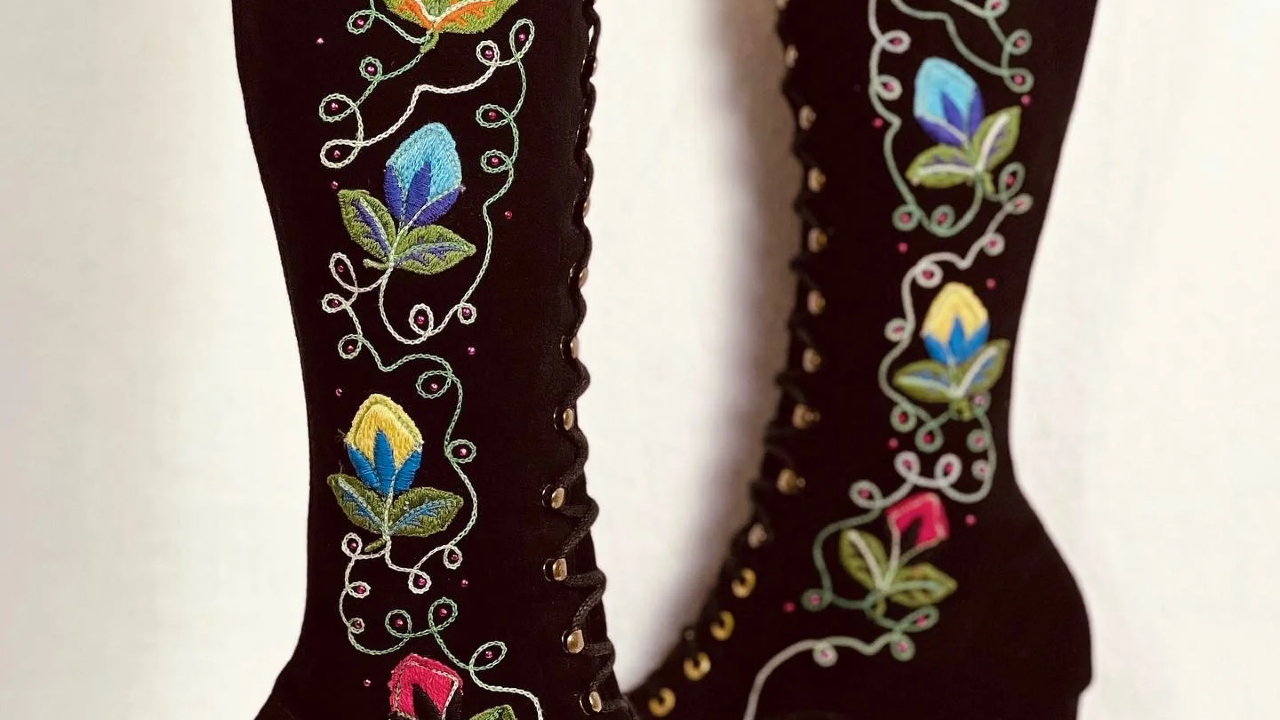AllVintageStyles
The Vintage Fashion Encyclopedia
Go-Go Boots


1960s go-go boots are knee-high or mid-calf boots in white or bright colors that became iconic footwear of the mod movement and space-age fashion, designed to complement mini skirts and embody the decade's futuristic optimism.
Quick Facts
- Era: 1960s (peak popularity 1965-1969)
- Origin: France/England (popularized by mod culture and go-go dancing)
- Garment Type: Knee-high or mid-calf boots
- Key Identifiers: White or bright colored vinyl/patent leather, low block heel, side zip closure
- Typical Resale Price: $80-$300 (authentic vintage pairs)
- Best For: Mod enthusiasts, 1960s fashion collectors, and retro dance events
History & Evolution
Go-go boots emerged in the mid-1960s as part of the mod movement's embrace of futuristic fashion and youth culture rebellion. The style was popularized by go-go dancers in discotheques and television shows like "Hullabaloo" and "Shindig," where young women wore the boots with mini skirts while dancing in elevated cages above dance floors.
The boots became synonymous with London's Swinging Sixties scene and the space-age aesthetic that dominated mid-decade fashion. Designers like Mary Quant and Courrèges created versions that emphasized clean lines, geometric shapes, and modern materials like vinyl and patent leather, perfectly complementing the decade's mini dress silhouette.
By the late 1960s, go-go boots had become mainstream fashion worn by young women worldwide, appearing in various heel heights and colors beyond the original white. The style declined with the rise of hippie fashion in the late 1960s, but today vintage pairs are highly sought after as quintessential symbols of 1960s mod culture and space-age optimism.
Authentication Tips
Authentic 1960s Features:
- Vinyl or patent leather construction with period-appropriate finish
- Side zipper closure (often metal) extending full length of boot
- Low block heel (typically 1-2 inches) with squared or rounded toe
- Quality construction with substantial sole and heel attachment
- Period-appropriate sizing that tends to run narrow
Common Reproductions/Modern Pieces:
- Modern synthetic materials that lack vintage vinyl texture
- Contemporary zipper construction or pull-on styles
- Higher heels or pointed toes that contradict 1960s proportions
- Poor quality construction with flimsy soles
- Modern comfort features like padding that weren't in vintage boots
Styling & Use Cases
- Best for mod enthusiasts: Pair with A-line mini dresses and geometric jewelry for authentic 1960s London styling
- Ideal for themed events: Style with shift dresses and bold tights for go-go party or mod revival looks
- Perfect for vintage collectors: Combine with space-age accessories and sleek hairstyles for complete 1960s futuristic aesthetic
Modern styling tips:
- Wear with contemporary mini skirts or dresses to recreate the classic mod silhouette
- Pair with cropped pants or leggings for updated vintage-inspired casual looks
- Style with vintage-inspired coats and accessories for cohesive retro winter outfits
FAQ
Q: How can I tell if go-go boots are authentic 1960s vintage?
A: Look for vinyl or patent leather construction, side zipper closures, low block heels, and period-appropriate sizing that runs narrow. Authentic pieces show quality construction methods and materials typical of 1960s footwear manufacturing.
Q: What's the typical price range for vintage go-go boots?
A: Authentic vintage go-go boots range from $80-$300 depending on condition, brand, and rarity. Exceptional examples in pristine condition or designer pieces command higher prices among 1960s fashion collectors.
Q: How should I care for vintage go-go boots?
A: Clean vinyl or patent leather with appropriate leather cleaners, condition periodically to prevent cracking, and store with boot trees or stuffing to maintain shape. Avoid excessive moisture and extreme temperatures.
Q: What makes 1960s go-go boots valuable to collectors?
A: Their iconic status as symbols of 1960s mod culture, association with space-age fashion and go-go dancing, representation of youth rebellion and futuristic optimism, and quality construction that embodies the decade's design innovation make them significant vintage pieces.
📷: Little Thimble Thrift & Vintage
